Pine cones-buds macerate with honey
Pine - protector of the respiratory system
Syrup of pine buds with growing cones, obtained by cold maceration with honey: an effective remedy in treating respiratory diseases such as: cough, bronchitis, pharyngitis, laryngitis, ... but also a drink with a refreshing taste and aroma.
Servings: 10 servings
A jar of ~ 330ml, ~ 10 servings, one serving being considered 1 tbsp = ~ 25ml-30ml
Ingredients
Materials
- - containers, preferably glass (jars, bottles) jar 330ml
- - sieve for separating the syrup
Preparation
 Wash the pine buds well (with cones in formation) and clean them of any impurities, then put them on a towel. They must be dried well, otherwise the remaining water could lead to fermentation of the syrup.
Wash the pine buds well (with cones in formation) and clean them of any impurities, then put them on a towel. They must be dried well, otherwise the remaining water could lead to fermentation of the syrup. Put pine buds with cones in the jar.
Put pine buds with cones in the jar. Add the honey, little by little, until the jar is full. The pine buds-cones must be completely covered with honey.
Add the honey, little by little, until the jar is full. The pine buds-cones must be completely covered with honey. Seal the jar tightly with a lid and leave to soak for at least 3 weeks in a dark place away from light. Every day it is good to shake the jar to mix the extract. You will notice how the honey changes its consistency and becomes thinner / fluid.
Seal the jar tightly with a lid and leave to soak for at least 3 weeks in a dark place away from light. Every day it is good to shake the jar to mix the extract. You will notice how the honey changes its consistency and becomes thinner / fluid. After maceration, strain the syrup obtained and it will be stored in glass containers (jars, bottles, recommended not very large) in a cool place and away from light (cool pantry or refrigerator).
After maceration, strain the syrup obtained and it will be stored in glass containers (jars, bottles, recommended not very large) in a cool place and away from light (cool pantry or refrigerator).
If it does not open, the syrup can be keept up to 1 year.
Once a bottle of syrup is opened, it must be kept cold. It is recommended to consume, after opening, in a maximum of 30 days.
Administration
For respiratory diseases, one tablespoon is administered 3-5 times a day, after which it is recommended not to drink or eat for 30 minutes.
In children the amount is halved, the spoon will be replaced with a teaspoon.
Observations
It is recommended to collect the pine buds with cones from mountain areas, from places as remote as possible, unpolluted.
Buds with cones should be as young as possible, have a raw green color and should not exceed 1-2 cm in length. They are harvested in April, May and at the latest in June.
The pine cones-buds, obtained by maceration with honey, can be stored for about 1 year, if it is not opened and it is kept in a dark and cool place (refrigerator).
After opening a bottle, it is recommended to consume it in a maximum of 30 days and it is mandatory to store it in the refrigerator.
The volatile oils from pine buds are those that have a bronchodilator effect (makes it easier to breathe) and are stronger than those from fir.
Effects and benefits
- for cough, bronchitis, pharyngitis, laryngitis or other respiratory conditions
- stimulates appetite and digestion
- dermatological
- alleviates intellectual fatigue
- strengthens the immune system
- to relax the nervous system
- helps to fix calcium in the bones
- fights osteoporosis
- good in the treatment of rickets
- pulmonary tonic
- antiseptics
- anti-inflammatory
- sedative
- diuretics
- astringent
- healing
- antidiarrheals
- antirheumatic
- vitaminizing
Side effects
- diuretic, if the recommended daily dose is exceeded
FAQ 💡❓
What happens when you combine pine buds and cones in one remedy?
➡️ You get a natural synergy: the buds bring freshness and volatile oils, the cones – concentrated tannins and resins. Together, they act deeply and long-lastingly.
Is this preparation stronger than the classic syrup from the buds?
➡️ Yes. By cold maceration, the enzymes are preserved, and the addition of cones provides an added therapeutic depth compared to boiled syrups.
Why is pine so present in natural recipes?
➡️ Pine is a "pharmacist" of the forest: it contains substances with antiviral, expectorant, anti-inflammatory, regenerating and even mild antidepressant effects.
Can this macerate support the body in serious respiratory diseases?
➡️ It does not replace medical treatment, but it is an excellent adjuvant in chronic bronchitis, sinusitis, persistent cough or mild asthma.
What does the resinous smell of the cones convey about the potency of this remedy?
➡️ That smell is a clear sign of the presence of active volatile compounds – exactly what makes pine a “natural disinfectant” of the respiratory tract.
Is it true that this preparation has a mild antidepressant effect?
➡️ Yes. The volatile oils in pine can stimulate the nervous system in a positive way, bringing clarity and mental tone.
What difference does honey make in a cone-based preparation?
➡️ Honey neutralizes the astringent taste of the cones and acts as a natural solvent for the active compounds, without degrading them.
Could this macerate be a kind of “raw forest syrup”?
➡️ Exactly. It is the essence of a coniferous forest in a jar, unprocessed, but powerful, alive and full of active plant information.
Is it a suitable preparation for the whole family?
➡️ Except for children under 2 years old and pregnant women, yes – it is a general tonic remedy, gentle but effective, especially in the cold season.
How can this macerate be integrated into a modern lifestyle?
➡️ You can take a teaspoon in the morning, instead of synthetic supplements, or you can add it to warm tea, salads, even dressings for a special taste.
Why is it left to macerate for at least 2 weeks?
➡️ The cones are hard, and extracting the active compounds takes time. Patience is the key to effectiveness in natural medicine.
What happens if it is left to macerate for more than 30 days?
➡️ It can start to ferment slightly, and the texture changes. Ideally, it should be strained in time and kept in a clean jar, in a cool place.
Is this remedy suitable for detoxification?
➡️ Yes. It has a mild diuretic effect, stimulates lymphatic circulation and helps cleanse the respiratory and urinary tract.
Can it be used externally, not just internally?
➡️ Diluted, it can be used in chest or throat compresses, in case of cough, hoarseness or bronchial congestion.
What do pine cones symbolize in traditional medicine?
➡️ In many cultures, they are a symbol of life, regeneration and mental clarity – it is no coincidence that they appear in sacred sculptures and protective decorations.

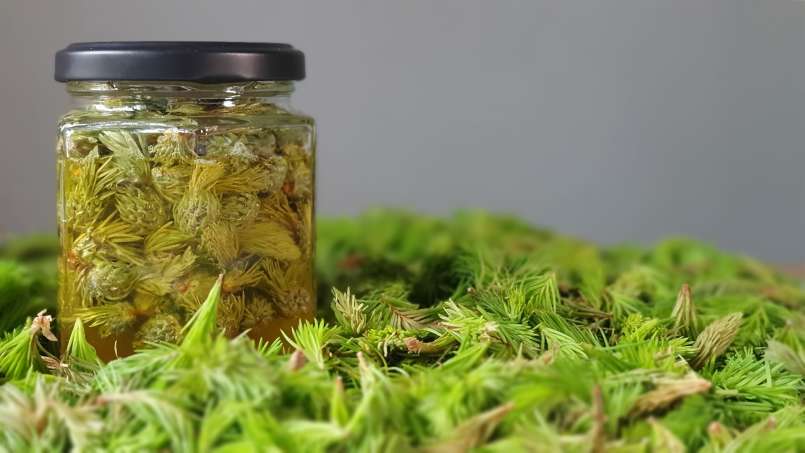
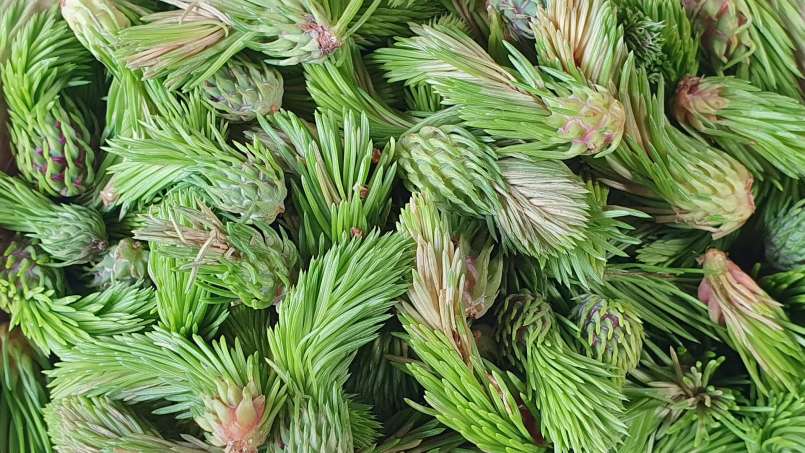
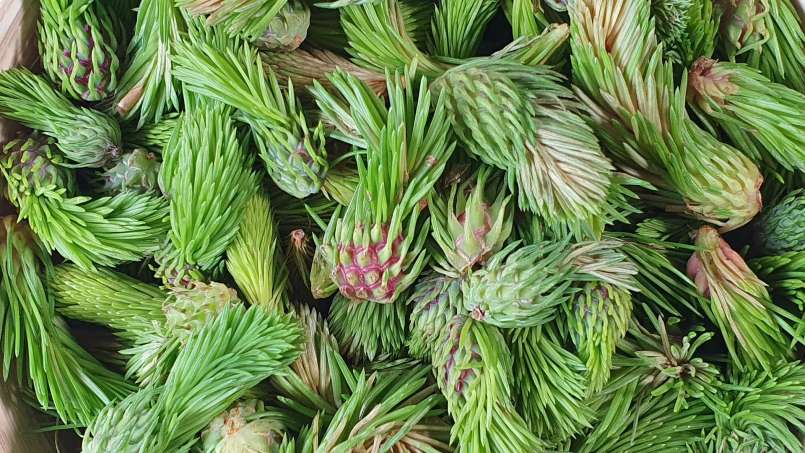

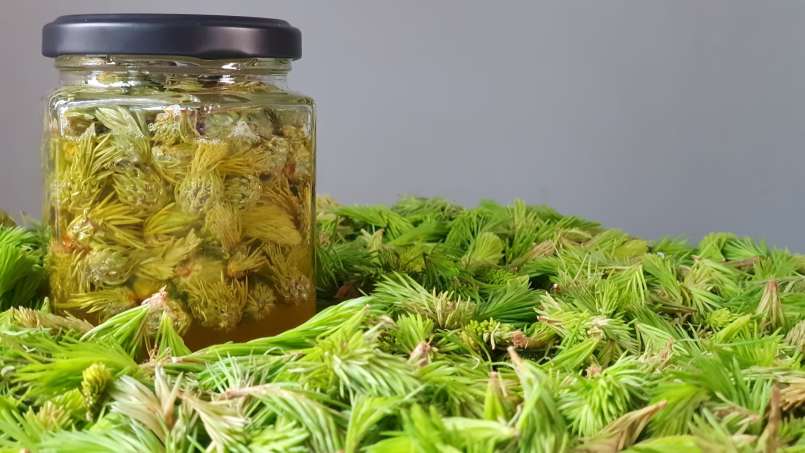
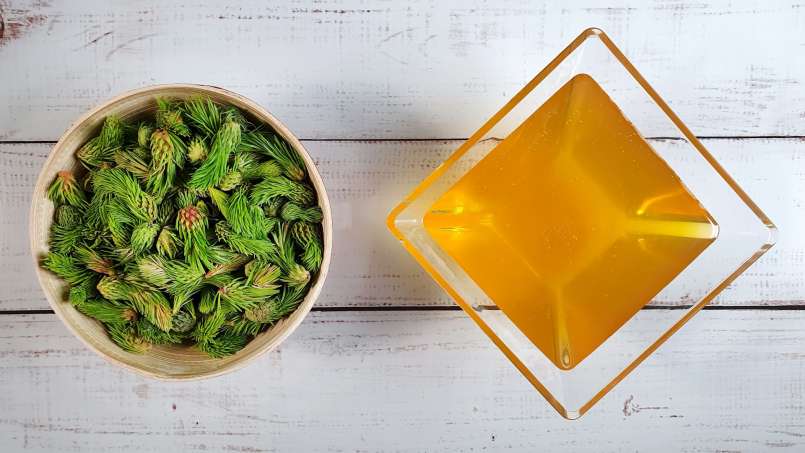
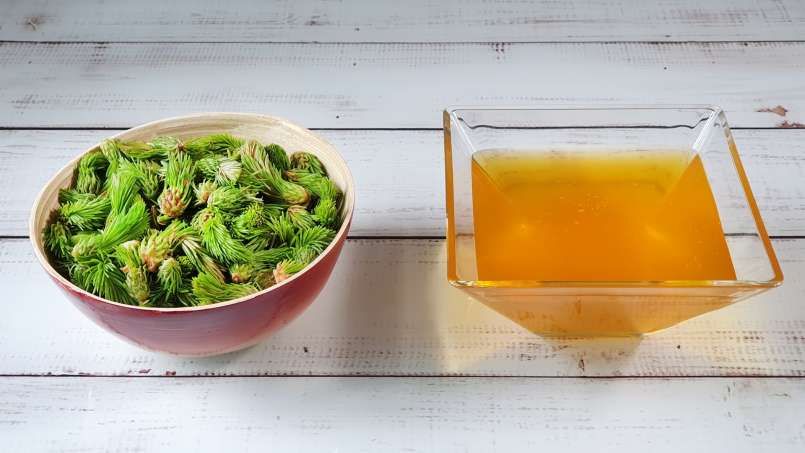
Comments